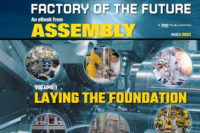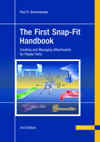Editorial: Foundation for the Future
From defense to infrastructure to telecommunications to consumer gadgetry, it is the technical workforce, principally engineers, who transform technology into products that enhance the quality of our lives. Thus the increasing popularity of engineering in the educational “big leagues” is encouraging.
Results of a recent survey by the American Society for Engineering Education (ASEE, Washington) show an increase of 3.4 percent in bachelor’s degrees in engineering awarded in 2002, marking the third consecutive year of growth at the undergraduate level. At the graduate level, the results are different but still encouraging. Master’s and doctoral enrollment both jumped more than 14 percent and the number of master’s degrees awarded is up 1.4 percent. Although the number of doctoral degrees awarded went down 4.7 percent, ASEE believes the weak labor market might be causing Ph.D. candidates to postpone graduation.
Unfortunately, however, things aren’t going as well down at the “farm clubs,” the elementary and high school math and science classrooms that feed into our colleges and universities. By the 12th grade, U.S. school children fall to the bottom of international tests in math and science, says Robert F. Black, ASEE deputy executive director. Worse yet, a wave of retirements is about to decimate the ranks of U.S. math and science teachers, while their potential young replacements are working in industry making much more money. No wonder that regardless of the recent upswing, engineering degrees are down 22 percent since 1985, even though college graduation rates have risen by 21 percent.
Nearly all of the more than 300 U.S. engineering programs are collaborating with local elementary and high schools to address these issues, says Black. Engineering makes math and science come alive for students and teachers alike, and as a result, math and science test scores of students in these engineering outreach programs go up.
Now the ASEE is stepping up to the plate to help the farm clubs. Its new guidebook to engineering for high school students, Engineering: Go For It! highlights the rewards of studying engineering and technology, and depicts engineering in a style that comes straight from the environment in which teen-agers’ lives and values take shape.
The book hits major issues confronting our nation today and puts the spotlight on America’s brightest kids from across the demographic spectrum. Its goal is to draw more prepared and motivated students into the educational and career paths that support the country’s science and technology enterprise.
Your company can make a significant investment in both its own and the country’s future by buying copies of this inexpensive guidebook ($3 a copy plus shipping) for your local high schools. For more information, visit www.engineeringk12.org. Help build a foundation for the future.
Looking for a reprint of this article?
From high-res PDFs to custom plaques, order your copy today!






